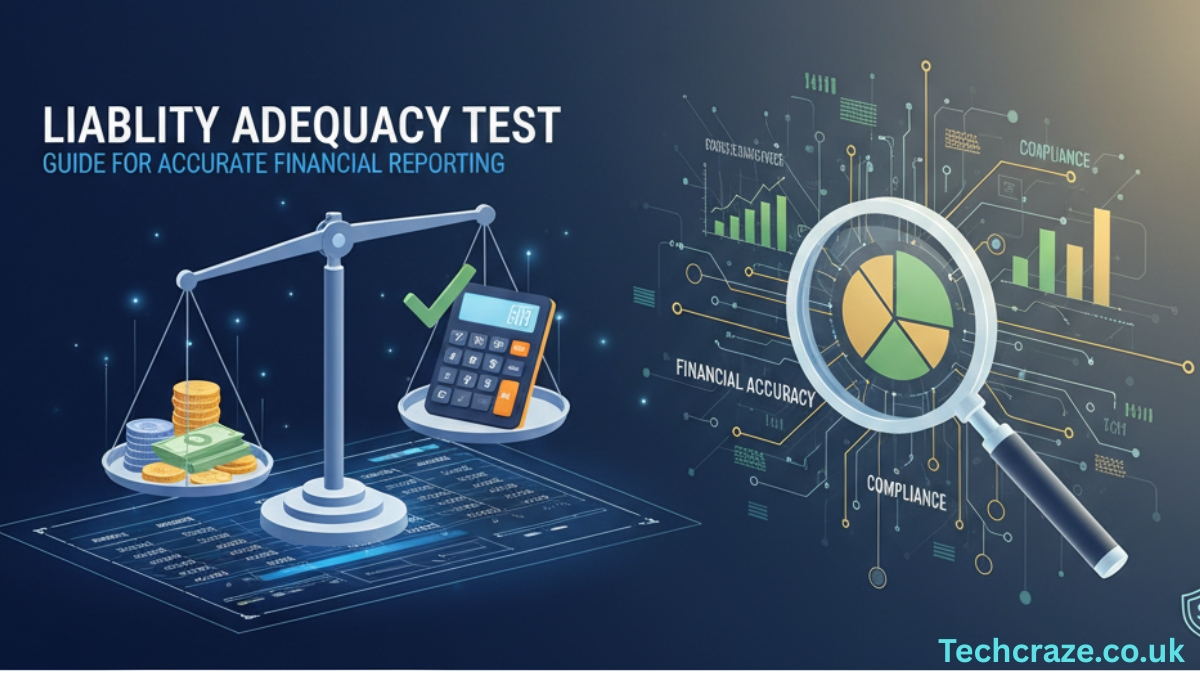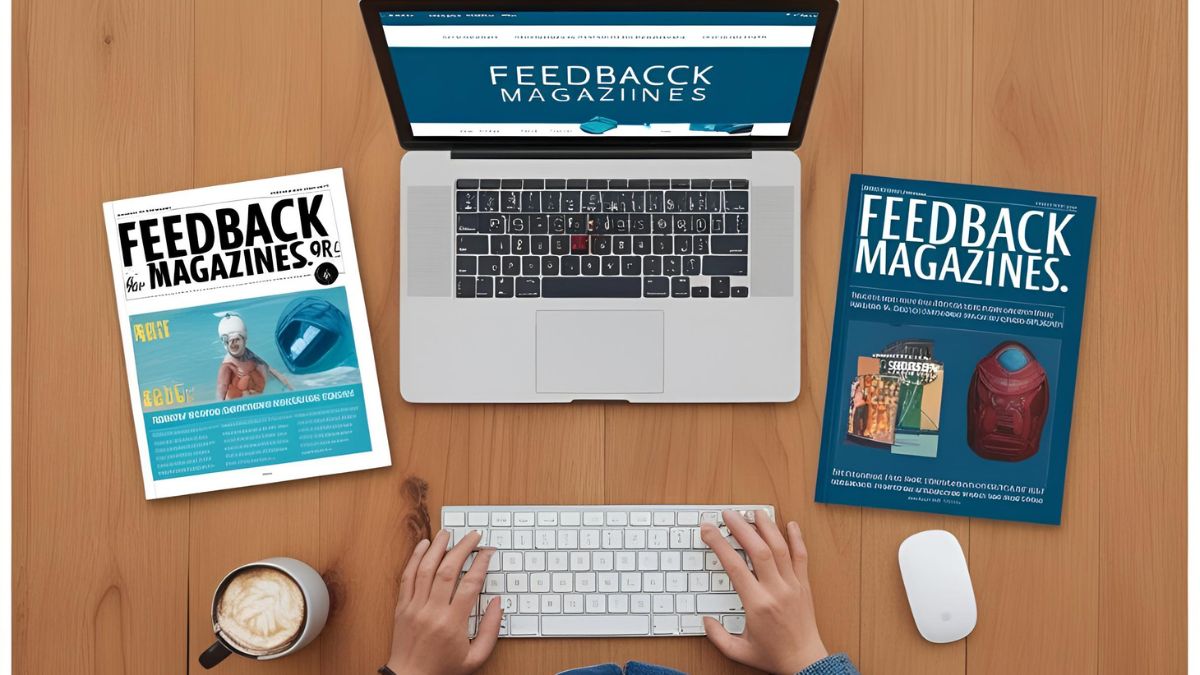Business
Liability Adequacy Test: Guide for Accurate Financial Reporting

“The Liability Adequacy Test is essential for the financial health of insurance companies, enabling them to detect reserve deficiencies, enhance reporting accuracy, and manage risk. By employing updated assumptions and data-driven methods, insurers ensure compliance with global regulations and promote long-term stability and growth.”
The liability adequacy test is an important financial assessment used in insurance and accounting to ensure that the liabilities recorded on a company’s balance sheet are enough to cover future obligations. The test helps organizations confirm that their reserves, estimates, and provisions will meet the actual cost of claims or commitments. This prevents unexpected financial gaps that could affect stability or investor confidence.
Companies conduct this test regularly to stay aligned with accounting standards and industry regulations. It also offers transparency by showing whether the financial assumptions behind liabilities are realistic. When the test reveals insufficient reserves, companies must adjust their liabilities immediately, which strengthens accuracy in financial reporting.
Why the Liability Adequacy Test Matters
The test is vital because it ensures that financial statements reflect true economic obligations. Without it, companies risk underreporting liabilities, which can mislead stakeholders and inflate profitability. Accurate liability recognition supports informed decision-making for investors, managers, and regulators.
It’s also a key requirement under international financial reporting standards. These standards emphasize that companies must regularly check the adequacy of their liabilities to prevent future solvency issues. A reliable test helps reduce financial surprises and promotes trust in the company’s long-term planning.
How the Liability Adequacy Test Works
The process involves comparing the carrying amount of liabilities with the present value of expected future cash flows. These cash flows may include claims, expenses, benefits, and any additional related costs. If the estimated future cash flows exceed the liabilities recorded, then the company must increase its reserves.
Actuarial models are often used to perform these calculations. These models consider factors like historical claim data, market trends, inflation, and risk predictions. The result is a more precise estimate of future obligations that helps companies maintain financial health.
Key Components Included in the Test
Several elements are evaluated when performing the test. These include claim reserves, premium liabilities, and anticipated expenses linked to managing future claims. The test also looks at potential changes in the economic environment that may influence costs over time.
Each component plays a role in shaping the final assessment. By reviewing these details, companies gain deeper insight into how their financial position might shift. This helps improve accuracy and reduces the chances of unexpected financial strain later on.
Role of Actuaries in the Test
Actuaries are central to the liability adequacy test. They bring analytical expertise to evaluate risk, calculate future obligations, and build forecasting models. Their skill in understanding trends and interpreting data makes the test more reliable and objective.
Their involvement also ensures that the test meets professional and regulatory standards. By using advanced methods and current market information, actuaries help keep the company’s liability estimates up-to-date and trustworthy.
Liability Adequacy Test in the Insurance Industry
The insurance sector relies heavily on this test because future claims and benefits make up a large part of its financial responsibilities. Insurers must ensure that premiums collected today will be enough to pay for claims tomorrow. The test helps identify shortfalls early so insurers can adjust pricing, reserves, or strategies as needed.
Regulators also require insurance companies to maintain accurate reserves to protect policyholders. As a result, regular testing is essential for compliance, financial stability, and maintaining trust in the insurance system.
Implications of Failing the Test
When a company fails the liability adequacy test, it means that the liabilities on record are not sufficient. This triggers an immediate need to strengthen reserves, which may impact profitability and reported earnings. It can also affect the company’s reputation if stakeholders view it as poor financial management.
However, addressing deficiencies promptly helps the company avoid long-term problems. Increasing liabilities ensures that obligations will be met, which ultimately reinforces financial strength and transparency.
How Companies Adjust After the Test
If gaps are found, companies usually increase their provisions or reserves. They may revise their assumptions about risks, inflation, or future expenses to make estimates more realistic. This update helps future financial statements reflect a more accurate view of the company’s obligations.
Organizations may also review their pricing strategies or investment portfolios after the results. These adjustments support long-term growth and reduce exposure to financial uncertainty.
Benefits of a Strong Liability Adequacy Framework
A consistent and accurate testing framework helps companies stay ahead of financial challenges. It strengthens stability, supports risk management, and helps leadership make strategic decisions based on reliable data. With a strong framework, companies can adapt faster to market changes and improve forecasting accuracy.
The framework also boosts transparency, which is essential for gaining trust from investors, regulators, and clients. Reliable testing reduces the chance of hidden liabilities that could lead to sudden financial shocks.
Future Trends in Liability Adequacy Testing
As financial environments evolve, so will the methods used in liability testing. The rise of advanced analytics, artificial intelligence, and real-time data tracking is making the process more precise. These tools help companies identify risks earlier and refine projections with better accuracy.
Regulators are also updating their guidelines as industries grow more complex. This means companies will need to stay informed about changes and maintain flexible systems that adapt to new standards.
Common Challenges Companies Face
Many companies struggle with changing economic conditions that affect long-term estimates. Inflation, shifting market trends, and unpredictable claims can make calculations difficult. Another challenge is maintaining high quality data that reflects current realities instead of outdated assumptions.
Despite these challenges, companies that invest in strong data systems and expertise can achieve better results. Accurate information helps simplify the test and improves overall financial reliability.
Ensuring Accurate Data for the Test
Data quality is crucial because inaccurate or incomplete information can lead to misleading results. Companies need systems that collect and manage detailed historical data, market insights, and operational expenses.
Regular updates and audits help maintain data accuracy. When combined with actuarial insight, high-quality data leads to a more reliable liability adequacy assessment.
Companies that adopt modern risk tools will gain a competitive edge.
Conclusion
The Liability Adequacy Test is a crucial tool for ensuring the financial health and credibility of insurance companies. It helps organizations identify deficiencies in reserves, improve reporting accuracy, and manage risk more effectively.
By using updated assumptions, risk margins, and data-driven methods, insurers can maintain strong financial positions and comply with global regulatory standards. LAT serves not only as a regulatory requirement but as a strategic tool for long-term stability and growth.
FAQs
What is the Liability Adequacy Test?
The Liability Adequacy Test is a financial assessment used by insurers to check whether their recorded liabilities are enough to cover future policy obligations. If the test shows a shortfall, companies must increase their reserves to stay compliant.
Why is the Liability Adequacy Test important?
It protects policyholders and ensures the insurer remains financially stable. By reviewing expected cash flows and comparing them to current reserves, the company can detect underfunded liabilities early.
How is the Liability Adequacy Test performed?
Actuaries estimate future cash flows, including claims, expenses and premium income. These estimates are then discounted and compared with the recorded liabilities. If the liabilities are lower than the expected future outflows, an adjustment is required.
Which companies are required to perform a Liability Adequacy Test?
Insurance companies and financial institutions that manage policyholder liabilities must perform this test. It is a regulatory requirement under international accounting standards such as IFRS 4 and IFRS 17.
What happens if liabilities fail the adequacy test?
If liabilities are found to be insufficient, the company must immediately strengthen its reserves. This adjustment helps ensure accurate financial reporting and protects the company’s long-term solvency.
Business
Brand Elevation Scale Agile Solutions: Empowering Growth and Innovation

“Brand Elevation Scale Agile Solutions offer a transformative method for enhancing brands by integrating agile principles with brand strategy. This approach enables organizations to innovate quickly, adapt flexibly, and concentrate on providing exceptional customer value. It promotes collaboration and data-driven decision-making, making these solutions essential for thriving in today’s unpredictable market and achieving long-term brand success.”
In today’s rapidly changing business world, success depends on how quickly a brand can adapt and evolve. Companies no longer compete on products alone they compete on agility, innovation, and the ability to deliver value faster. This is where Brand Elevation Scale Agile Solutions comes in. It’s a modern approach that helps businesses grow strategically by merging agile practices with brand-building frameworks.
This method is not just about project management; it’s about creating a culture of flexibility, collaboration, and innovation that drives brand success. In this article, we’ll explore how Scale Agile Solutions work, how they elevate brands, and why they are becoming essential for sustainable business growth.
Understanding Brand Elevation in the Modern Era
Brand elevation is the process of strengthening a brand’s identity, value, and visibility in the market. It involves improving how customers perceive the brand and how effectively the company delivers on its promises.
In a fast-paced environment, traditional strategies often fail to keep up with consumer expectations. Modern customers want quick, personalized, and consistent experiences. Elevating a brand today means adopting agile frameworks that can handle constant change while maintaining the brand’s core message.
When a brand uses Scale Agile Solutions, it gains the ability to adapt its strategies in real-time, improve teamwork, and maintain a continuous focus on customer satisfaction all key drivers of brand elevation.
What Are Scale Agile Solutions?
Scale Agile Solutions are frameworks designed to extend agile principles beyond small teams to the entire organization. They ensure alignment between departments, streamline processes, and encourage cross-functional collaboration.
In simpler terms, these solutions help large companies act with the speed and flexibility of startups. They combine methodologies like SAFe (Scaled Agile Framework), Scrum, and Lean to improve performance and responsiveness.
When applied to brand management, these solutions allow marketing, development, and customer service teams to work together seamlessly. The result is faster product delivery, stronger brand consistency, and improved customer engagement.
The Connection Between Agility and Brand Growth
Agility is no longer just a tech term it’s a business survival skill. Brands that embrace agility can pivot quickly when market conditions change. This ability to adapt gives them a competitive edge.
By implementing Scale Agile Solutions, companies break down silos and create a transparent communication culture. This makes it easier to innovate and align brand goals across departments. Teams work iteratively, meaning they can test, learn, and improve strategies based on data and customer feedback.
As a result, the brand evolves continuously rather than waiting for annual strategy overhauls. This ongoing improvement strengthens its position and helps it remain relevant in a crowded market.
How Brand Elevation Scale Agile Solutions Work
Brand Elevation Scale Agile Solutions integrate agile practices into every aspect of brand development and management. They focus on speed, flexibility, and value delivery.
The process typically begins with identifying the brand’s goals and customer expectations. Teams then develop small, testable strategies known as “sprints.” Each sprint is evaluated for performance, and adjustments are made based on feedback.
This iterative approach ensures that marketing messages, product updates, and customer experiences align with brand values and market demands. It creates a continuous loop of improvement that boosts brand credibility and customer trust.
Benefits of Brand Elevation Through Agile
Adopting Scale Agile Solutions offers several measurable benefits for brands aiming to elevate their position.
First, it enhances efficiency by reducing time spent on long, outdated planning cycles. Teams focus on delivering results in shorter intervals, ensuring faster go-to-market times.
Second, it improves team collaboration. Agile promotes transparency and accountability, helping different departments share insights and stay aligned with brand goals.
Finally, it strengthens customer satisfaction. Agile frameworks prioritize user feedback and data, allowing brands to tailor products and campaigns that resonate with their audience.
Scaling Agile Across the Organization
Scaling agile is about applying its core principles beyond IT or software teams. It extends to marketing, HR, operations, and even customer service.
When scaled properly, agile becomes part of the brand’s DNA. Every team understands the brand’s vision and contributes to it with shared responsibility. This alignment creates a strong internal culture that reflects externally through customer experiences.
Companies like Spotify, Google, and Amazon have mastered this approach, using agile principles to innovate continuously and maintain strong brand loyalty.
Aligning Agile Solutions with Brand Strategy
For agile solutions to truly elevate a brand, they must align with its long-term strategy. This means defining clear goals, measurable metrics, and a shared understanding across teams.
A successful agile brand strategy includes customer-centric goals, flexible planning, and data-driven decision-making. Teams should be empowered to make quick changes when customer feedback suggests improvement.
When strategy and agility work together, the brand becomes proactive rather than reactive. This alignment helps maintain consistency while fostering innovation a combination essential for modern brand growth.
The Role of Technology in Scale Agile Solutions
Technology is a core enabler of Scale Agile Solutions. Digital tools like project management software, analytics dashboards, and automation platforms make agile implementation smoother and more efficient.
Data analytics, for instance, helps teams measure the impact of campaigns and customer satisfaction in real-time. Cloud-based collaboration tools ensure that teams across departments or even continents can stay connected.
By integrating technology with agile frameworks, companies achieve a higher level of transparency, productivity, and adaptability all critical for elevating their brand performance.
Challenges in Implementing Scale Agile Solutions
While agile frameworks offer immense benefits, implementing them at scale can be challenging. Resistance to change is often the biggest barrier. Many organizations struggle to shift from hierarchical decision-making to collaborative, team-based approaches.
Additionally, maintaining consistency across large teams can be difficult. Without clear communication channels, agile processes can become fragmented. To overcome this, leadership must foster a culture that values experimentation, learning, and feedback.
Another challenge lies in balancing speed with quality. Agile encourages fast delivery, but brands must ensure that their message and experience remain authentic and aligned with core values.
Case Example: Applying Agile to Elevate a Brand
Consider a retail brand looking to enhance its digital presence. By adopting Scale Agile Solutions, the company reorganizes its teams around customer-focused objectives instead of departmental silos.
Marketing, design, and IT teams begin working in sprints, sharing updates and results frequently. This enables faster campaign rollouts and real-time improvements based on user feedback.
Within months, the brand experiences improved customer engagement, higher conversion rates, and stronger loyalty all achieved by aligning agile practices with branding goals.
The Future of Brand Elevation with Agile
As markets become more digital and customer expectations rise, the future of brand building lies in agility. Companies that continuously learn, adapt, and innovate will stay ahead.
Agile methods will evolve further, integrating artificial intelligence, automation, and predictive analytics to enhance decision-making. Brands that embrace these technologies through agile frameworks will not only stay competitive but also lead the transformation in their industries.
The goal is no longer just to manage change but to anticipate and shape it.
Conclusion
Brand Elevation Scale Agile Solutions represent a transformative way of building stronger, smarter, and more adaptable brands. By merging agile principles with brand strategy, organizations gain the speed to innovate, the flexibility to evolve, and the focus to deliver exceptional customer value.
This approach fosters collaboration, data-driven decision making, and continuous improvement across all levels of the organization. For businesses aiming to thrive in today’s unpredictable world, Scale Agile Solutions are not just a framework they’re a necessity for brand elevation and long-term success.
FAQs
What are Brand Elevation Scale Agile Solutions?
Brand Elevation Scale Agile Solutions are frameworks that combine agile principles with brand-building strategies. They help organizations improve adaptability, enhance teamwork, and deliver consistent value to customers while strengthening brand identity and performance.
How do Scale Agile Solutions help in brand growth?
Brand Elevation Scale Agile Solutions allow brands to respond quickly to market changes and customer needs. By breaking down silos and promoting collaboration across teams, they enable faster innovation, consistent communication, and continuous improvement all key factors for brand growth and loyalty.
Can agile methods be applied outside of software development?
Yes, absolutely. Agile principles can be applied across various departments like marketing, HR, sales, and operations. When scaled properly, they improve efficiency, transparency, and cross-functional collaboration, driving overall organizational and brand success.
What challenges do companies face when implementing Scale Agile Solutions?
The main challenges include resistance to cultural change, lack of communication between teams, and balancing speed with brand consistency. However, with proper training, leadership support, and the right tools, these challenges can be effectively managed for long-term results.
Why are agile frameworks important for modern brands?
In a fast-changing digital world, agility allows brands to stay ahead of competitors by being responsive and adaptable. Agile frameworks ensure that brands can innovate quickly, deliver value faster, and build strong relationships with their customers through continuous improvement.
Business
Sosoactive Financial News: Insights on Finance & Business

The financial world is changing faster than ever, and staying updated is no longer optional it’s essential. That’s where Sosoactive Financial News comes in. This platform delivers clear, timely, and well-researched information on global finance, markets, and economic trends. Beyond finance, it also dives into business innovations and education developments, making it a comprehensive hub for professionals, investors, and learners alike.
In this article, we’ll explore what makes Sosoactive Financial News stand out, how its business and education segments contribute to its reputation, and why it’s becoming a trusted source for accurate and insightful reporting in today’s digital economy.
What is Sosoactive Financial News?
Sosoactive Financial News is an online publication focused on delivering in-depth coverage of global finance, business, and education. It offers an engaging mix of breaking news, expert analysis, and opinion pieces that help readers understand the forces shaping economies and industries.
What sets it apart is its balance between accessibility and accuracy. The platform makes complex financial topics understandable without oversimplifying them. Whether it’s a shift in global markets or a new business policy, readers can rely on Sosoactive for clarity and relevance.
This approach has built a loyal following among investors, entrepreneurs, and students who want both insight and reliability from a single source.
Coverage Beyond Finance
While its core lies in financial reporting, Sosoactive goes beyond the numbers. The publication connects financial developments to other crucial areas like business innovation and educational progress. This interconnected approach helps readers see the bigger picture how market trends influence industries and how education drives business evolution.
By merging financial, business, and educational insights, Sosoactive Financial News ensures readers stay informed about the forces shaping the world economy holistically.
The Depth of Sosoactive Business News
Sosoactive Business News is one of the most engaging sections of the platform. It delivers real-time updates on companies, startups, leadership trends, and market strategies that define modern commerce.
The platform doesn’t just focus on large corporations it also highlights small businesses and entrepreneurs who are driving innovation in unexpected places. This inclusive coverage allows readers to discover both the challenges and opportunities facing today’s business landscape.
In addition, the publication’s focus on sustainable business models and ethical entrepreneurship reflects the modern demand for responsible corporate behavior. Through case studies, expert opinions, and industry spotlights, Sosoactive Business News helps professionals understand where the global market is heading and how to adapt.
Innovation and Entrepreneurship at the Core
One of the strengths of Sosoactive’s business reporting is its focus on innovation. The world of business is constantly evolving, and the platform ensures readers are aware of how technology and strategy are reshaping industries.
Articles often explore how companies integrate AI, automation, and digital transformation to improve efficiency. They also feature insights on startups breaking traditional business models and reshaping customer business models and reshaping customer experiences.
This kind of content not only informs but also inspires. Readers gain practical knowledge they can apply in their own ventures or careers, making Sosoactive Business News more than just a reporting outlet it’s a guide for growth and innovation.
The Role of Sosoactive Education
While finance and business often take center stage, Sosoactive Education plays a key role in the platform’s mission to empower readers. It covers educational trends, technology in learning, and the economic aspects of education, helping readers understand how knowledge and skills shape the economy.
In today’s world, education is deeply tied to finance. From student loans and funding to the value of new educational technologies, Sosoactive bridges the gap between academic systems and financial realities.
The platform also highlights how schools, universities, and online learning platforms are adapting to prepare students for a changing job market. By doing so, it connects education with business and finance showing how they influence one another in practical and measurable ways.
Financial Insights that Matter
Sosoactive Financial News isn’t just about reporting figures or market updates. It focuses on interpreting trends and explaining their long-term effects. Whether it’s a central bank decision, a global recession forecast, or a cryptocurrency surge, the platform explains what these developments mean for investors and businesses.
Its articles often combine data-driven insights with expert commentary, giving readers both context and clarity. This mix of analysis and accessibility helps readers make more informed financial decisions something especially valuable in today’s volatile markets.
Moreover, the site emphasizes personal finance and investment education. From budgeting tips to portfolio management strategies, readers find actionable information that improves their financial literacy.
A Reliable Source for the Modern Reader
In an age of misinformation, credibility matters. Sosoactive Financial News maintains its reputation through factual reporting, verified data, and balanced perspectives. Each article is backed by research and written with transparency, helping readers trust the information they consume.
The publication’s editorial team focuses on simplifying complex subjects without losing depth. This makes it equally useful for professionals who need precise data and for casual readers who want a clear understanding of financial events.
Its structured layout, easy navigation, and visually clean design further enhance the reading experience ensuring that information is both useful and enjoyable to consume.
How Sosoactive Connects Finance, Business, and Education
One of the most impressive things about Sosoactive is how it connects three distinct yet interrelated areas finance, business, and education into one cohesive narrative.
For instance, a report on rising inflation might link to business adaptation strategies and an analysis of how educational institutions are preparing students for new economic realities. This cross linking helps readers grasp the cause and effect relationships between sectors.
It’s this interconnected perspective that makes Sosoactive Financial News more than just another news site. It’s a dynamic ecosystem of ideas and information that keeps readers informed about how money, innovation, and knowledge move the world forward.
The Platform’s Vision and Impact
Sosoactive’s mission is to make financial and business knowledge accessible to everyone. The platform aims to reduce the gap between experts and everyday readers, promoting a culture of informed decision-making.
By featuring educational insights and focusing on the financial literacy of its audience, the platform encourages readers to think critically and engage with global issues. Its coverage has become a valuable tool for professionals, educators, and students looking to understand economic realities in a practical context.
Why Readers Trust Sosoactive Financial News
Trust comes from consistency, and Sosoactive has built it through reliable journalism and thoughtful storytelling. Every piece of content, whether about a business trend or educational reform, reflects a commitment to truth and quality.
Readers appreciate the publication’s independence and focus on accuracy. Its human-centered approach ensures that behind every statistic or headline, there’s a story about people entrepreneurs, workers, students, and consumers—who shape the economy.
That human touch gives Sosoactive an edge in a field often dominated by jargon and impersonal reporting.
Conclusion
Sosoactive Financial News has redefined how financial journalism can be approached. By merging finance, business, and education into one interconnected framework, it gives readers a deeper understanding of how these elements drive progress.
Through Sosoactive Business News, readers gain insights into market strategies and innovation. Through Sosoactive Education, they learn how knowledge powers economic growth. And through its financial coverage, they see how global trends affect local realities.
In a time when reliable information is more valuable than ever, Sosoactive stands out as a platform that informs, educates, and empowers. It’s not just a source of news it’s a guide to understanding the forces shaping the future.
FAQs
What is Sosoactive Financial News?
Sosoactive Financial News is an online publication that covers global finance, business, and education. It provides readers with reliable updates, expert commentary, and easy-to-understand analyses of current market trends and innovations.
How is Sosoactive Business News different from other business platforms?
Sosoactive Business News stands out for its focus on both established corporations and emerging startups. It highlights innovation, sustainable practices, and the role of entrepreneurship in today’s fast-changing economy. The coverage helps professionals stay informed and inspired.
What kind of topics does Sosoactive Education cover?
Sosoactive Education explores how the education sector connects with finance and business. It discusses learning technologies, education funding, and how academic institutions are adapting to prepare students for modern job markets and financial realities.
Why is Sosoactive Financial News trusted by readers?
The platform’s credibility comes from its balanced reporting, data-backed insights, and commitment to accuracy. Every article is written to simplify complex topics while maintaining factual depth, helping readers make informed financial and professional decisions.
How can readers benefit from following Sosoactive Financial News?
Readers can gain valuable knowledge on managing finances, understanding market trends, and recognizing opportunities in business and education. Whether you’re an investor, entrepreneur, or student, the platform provides practical insights for growth and success.
Business
Master Data Skills with Business Intelligence Exercises

“Business Intelligence exercises teach professionals how to collect, analyze, and visualize data to make better business decisions. Using tools like Power BI, Tableau, and Google Data Studio, these exercises strengthen analytical skills, improve collaboration, and build data-driven cultures. They help organizations predict trends, measure performance, and adapt quickly in an ever-changing market — making BI exercises a cornerstone of modern business success.”
In today’s digital economy, data is at the heart of every business decision. Organizations are flooded with information, but not all of them know how to use it effectively. This is where Business Intelligence (BI) exercises come into play. These exercises help professionals build hands-on experience in collecting, analyzing, and visualizing data for smarter decision-making.
Whether you’re an analyst, manager, or student, BI exercises are the best way to sharpen your analytical thinking and understand how real-world companies use tools like Power BI, Tableau, and Looker to stay ahead. Let’s explore what these exercises involve, why they matter, and how you can start using them to boost your data intelligence.
What Are Business Intelligence Exercises
Business Intelligence exercises are structured activities designed to simulate real-world data analysis scenarios. They help individuals and teams learn how to extract valuable insights from raw data using BI tools and techniques.
These exercises may include creating dashboards, visualizing KPIs, building data models, and performing predictive analysis. The goal is to turn complex datasets into meaningful patterns that guide business decisions.
Think of BI exercises as “data workouts.” Just like physical exercise builds muscle, these challenges strengthen your ability to think critically and use data strategically.
Why BI Exercises Matter for Organizations
For modern organizations, data is an asset only if it can be interpreted correctly. BI exercises train employees to handle this data more effectively. They teach teams how to spot trends, identify performance gaps, and uncover hidden opportunities.
When organizations regularly engage in BI exercises, they develop a data-driven culture. This helps reduce guesswork, improve forecasting, and support evidence-based decision-making across all departments.
Ultimately, these exercises bridge the gap between data collection and real-world action, helping businesses make smarter, faster, and more accurate choices.
Key Components of Effective BI Exercises
The best BI exercises focus on three core elements: data sourcing, analysis, and visualization. Each plays a unique role in developing analytical expertise.
-
Data Sourcing: This involves gathering accurate and relevant data. Exercises often use sample databases or simulated business datasets that include sales, customer behavior, or market performance.
-
Data Analysis: Participants clean, filter, and process this data using BI tools. They identify key metrics such as profit margins, sales growth, or customer retention rates.
-
Data Visualization: Finally, learners build interactive dashboards or reports to communicate findings clearly to stakeholders.
By practicing these components repeatedly, professionals learn not just how to use data—but how to tell stories with it.
Real-World Examples of BI Exercises
BI exercises can be simple or complex, depending on your skill level. Here are a few examples used by professionals and students alike.
-
Sales Performance Dashboard: Analyze sales data by region, product category, and month to identify which areas contribute most to revenue.
-
Customer Segmentation Analysis: Use customer purchase histories to group buyers by age, spending habits, or geography, and suggest marketing strategies.
-
Profit and Loss Reports: Create visual reports that track company performance over time, helping leadership make financial adjustments.
These exercises mimic real business challenges and give you practical skills that can be applied immediately in professional environments.
How to Design Your Own BI Exercise
Creating your own BI exercise doesn’t require advanced tools or expensive software. Start with a simple goal like understanding customer behavior or tracking marketing campaign performance.
Next, collect a dataset from open sources such as Kaggle, Google Dataset Search, or company CRM exports. Use tools like Excel, Power BI, or Tableau to organize and visualize the data.
Finally, challenge yourself with a question such as, “Which product category delivers the highest return on investment?” or “What factors influence monthly revenue fluctuations?” Designing your own BI tasks helps you think like a data strategist rather than just a report builder.
Common Mistakes to Avoid
While practicing BI exercises, many learners fall into common traps that limit their progress. One frequent mistake is focusing on visuals instead of insights creating fancy dashboards that look good but lack meaningful conclusions.
Another common error is ignoring data quality. If your data is inaccurate or incomplete, your analysis will be misleading no matter how polished your charts appear.
Lastly, avoid working in isolation. BI is often a collaborative process involving teams, departments, and clients. Sharing your results and discussing interpretations builds stronger analytical confidence.
Tools That Help with BI Practice
Several powerful tools make Business Intelligence exercises more efficient and realistic. Microsoft Power BI is one of the most popular platforms for building dashboards and data reports. Its integration with Excel and cloud connectivity make it ideal for professionals.
Tableau offers a more visual and interactive experience, perfect for those who prefer drag-and-drop data exploration. It’s widely used by enterprises and is a favorite among data visualization experts.
For beginners, tools like Google Data Studio and Qlik Sense provide free and intuitive environments to practice BI exercises without steep learning curves. Choosing the right tool depends on your goals and comfort level with data.
The Future of Business Intelligence Learning
As artificial intelligence and automation evolve, Business Intelligence is also changing rapidly. Future BI exercises will include machine learning models, predictive analytics, and real-time data integration.
This means professionals who practice BI today are preparing themselves for the next generation of analytics. The focus is shifting from just “what happened” to “what will happen next,” enabling smarter forecasting and proactive decision-making.
Continuous learning through BI exercises ensures that individuals and organizations remain competitive in a data-driven world.
How BI Exercises Improve Career Growth
Learning through BI exercises can significantly boost your career potential. Employers value professionals who can translate data into strategic insights. Completing regular BI challenges enhances your technical knowledge and problem-solving mindset.
It also demonstrates your ability to use real-world tools effectively, making you stand out in roles like Data Analyst, Business Intelligence Specialist, or Operations Strategist.
By mastering BI exercises, you gain the confidence to handle large datasets, lead analytics projects, and contribute meaningfully to organizational success.
Conclusion
Business Intelligence exercises are more than just technical drills they’re stepping stones toward becoming a data-savvy professional. By engaging in regular BI practice, you learn to think critically, handle complex information, and make informed business decisions.
Whether you’re using Power BI, Tableau, or Excel, every exercise strengthens your ability to interpret data in a meaningful way. In a world where information is power, mastering BI exercises ensures that you not only understand the numbers—but know exactly how to use them to drive success.
FAQs
What are Business Intelligence exercises?
Business Intelligence exercises are hands-on data analysis and visualization activities designed to help learners practice using BI tools like Power BI, Tableau, or SQL. They teach how to clean, analyze, and interpret data for better decision-making.
Why should businesses practice BI exercises?
BI exercises help teams develop data literacy, improve performance tracking, and make strategic decisions based on insights rather than assumptions. They also enhance collaboration across departments.
What tools are best for Business Intelligence exercises?
Popular tools include Microsoft Power BI, Tableau, and SQL for database management. These platforms offer dashboards, visualization tools, and real-time data analysis capabilities.
Can beginners learn BI through exercises?
Yes. Beginners can start with simple Excel-based reports or basic Power BI dashboards. Over time, they can progress to more advanced exercises like predictive analytics and automated reporting.
How do BI exercises improve career opportunities?
Mastering BI exercises builds analytical and technical skills that are in high demand across industries. Professionals with BI expertise often qualify for roles like data analyst, BI developer, or business strategist.
-

 News7 months ago
News7 months agoCristian Romero Opens Door to Tottenham Exit as Atletico Madrid Eyes £43 Million Move for Argentina Star
-

 News7 months ago
News7 months agoNancy Mace Faces Criticism and Support After Heated Exchange With Trans Activist at South Carolina Event
-

 Blog8 months ago
Blog8 months agoFeedbackMagazines.org/: A Hub for Engaging Content
-

 Tech9 months ago
Tech9 months agoExploring Eporer: The Digital Revolution You Need to Know
-

 News7 months ago
News7 months agoBluesky confirms new verification system to fight fake profiles and boost user confidence on its growing US-based platform
-

 News7 months ago
News7 months agoPassengers From Luxury Rovos Rail Train Thank Zimbabwe for Support as They Arrive in Victoria Falls After Collision Near Gwanda
-

 News7 months ago
News7 months agoDefense aides say internal Pentagon purge punished them for resisting secretive war agendas in Washington
-

 News7 months ago
News7 months agoRulani Mokwena becomes top managerial target as Orlando Pirates weigh high-stakes coaching change in Soweto

